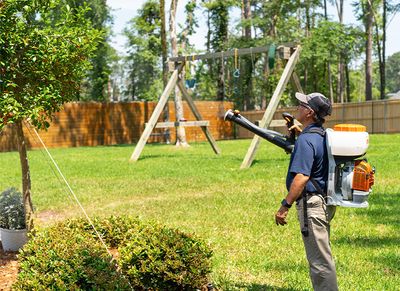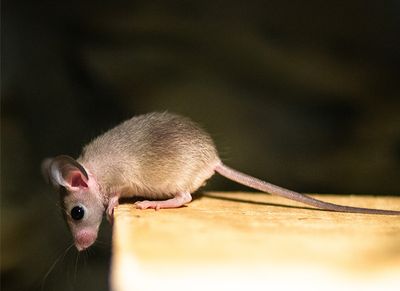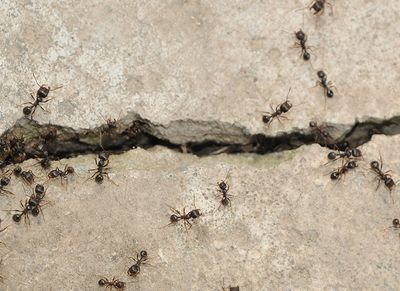What do striped bark scorpions look like?
The striped bark scorpion is a light brown to yellowish-brown arachnid with two distinct dark stripes running down its back. It has a slender body and is between two and three inches long. Like all scorpions, it has a curled tail with a venomous stinger on the tip. However, its surprisingly small size might make it difficult for you to immediately recognize this pest as a scorpion.
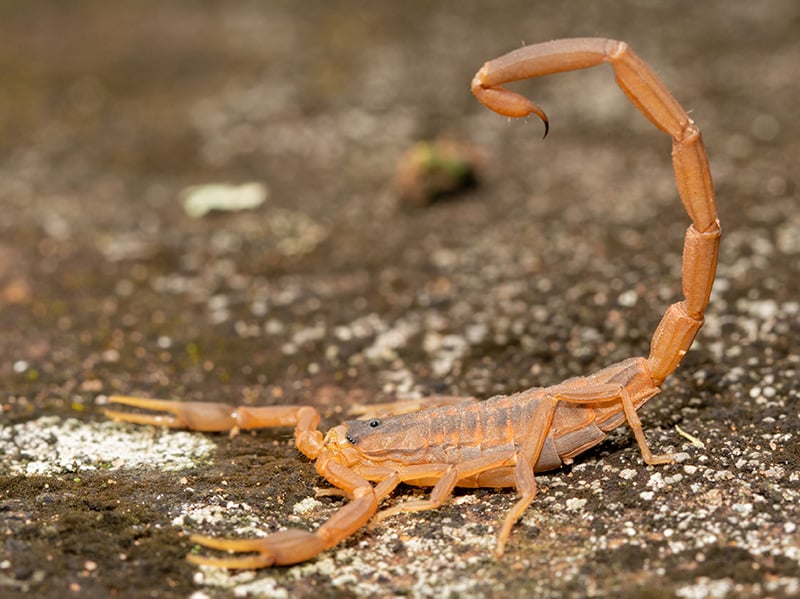
When are striped bark scorpions most active?
Are striped bark scorpions harmful?
Yes. The venom of a striped bark scorpion is potent, and you may need medical attention when bitten. However, there is insufficient evidence to firmly establish fatalities caused by this particular species. In fact, most stings only result in localized pain, swelling, numbness, and discoloration. You may treat these wounds by cleaning them and applying an ice pack. If you experience more than localized symptoms, seek the assistance of a medical professional immediately.
Can striped bark scorpions climb walls?
Yes, bark scorpions are surprisingly adept at scaling surfaces. In their natural habitat, they climb the bark of trees in search of prey, which is why they're called bark scorpions. They have no trouble scaling the exteriors of human-made structures or climbing up interior walls. How do they do it? They grip surfaces using specialized structures on their feet called pectines. Additionally, they have thin, hair-like structures on their exoskeletons called setae, which help prevent them from sliding down as they cling and climb.
Why do striped bark scorpions come into the house?
The simple answer is because they can. A bark scorpion doesn't need a reason to invade your space. It is just doing what it was made to do.
When a bark scorpion comes near your home, it is likely to invade. It is looking for a cool, damp place to hide during the day. It will scale your home and slip underneath siding as it would slide underneath the bark of a tree and get in through a gap between two wood members as it would a gap that leads into a tree cavity.
Where do striped bark scorpions like to hide in houses?
Striped bark scorpions are adept at finding their way into structures. Once inside, they find their way to dark, secluded areas. You can find them hiding underneath boards or tiles, behind baseboards and crown molding, skittering inside your air ducts, and more. They are drawn to tight spaces and can tuck themselves into places that would surprise you. You'll need to look high and low and inspect gaps and cracks for these pests. As you search, we recommend using a black light to make the scorpions glow and help you find them more easily.
How do I get rid of scorpions?
Reach out to Anti-Pest for help eliminating scorpions. We provide ongoing home pest control services and commercial pest solutions that target scorpions and other nuisance and potentially harmful insects and rodents. Since 1950, our locally owned and family-operated pest control company has proudly served Bossier, Caddo, and DeSoto Parishes; you can count on us!
How can I keep striped bark scorpions away?
There are many ways to deter striped bark scorpions from selecting your yard or getting inside the structures on your property. Your Anti-Pest service team is committed to sharing all of your options with you. Let's start with steps you can take.
- Make sure your gutters are not blocked. Obstructions can cause rainwater to run over and soak the soil. Saturation of soil leads to damp conditions, which invite scorpions.
- Remove clutter near your exterior walls. Scorpions are attracted to piles. They like to hide in all of the tight spaces found in piled objects. They are particularly attracted to branches and campfire wood.
- Blow leaves out. Scorpions love to hunt underneath leaf litter where plentiful food sources are available.
- Trim vegetation, cut grass, and remove weeds. Humid landscaping is a strong attractant.
- Remove spider webs. Many spiders create egg sacs in their webs, and these can produce hundreds of spiderlings, which are food for scorpions.
- Pest-proof your home. Use a caulking gun, expanding foam, weatherstripping, sweeps, and other materials to keep these pests out.
You're never alone when it comes to keeping bark scorpions and other pests out of your home. Your Anti-Pest service technician can help you with pest-proofing key areas and apply a range of pest management methods and materials to reduce pest populations in your yard and keep pests out. Our technicians are highly trained and super friendly. Let us provide the science-based pest solutions you need. Connect with us today.

Testimonials


Our Services


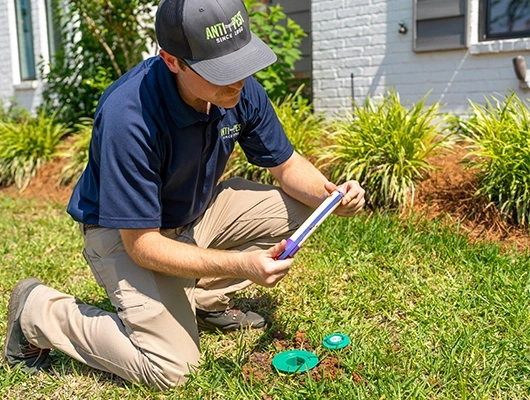

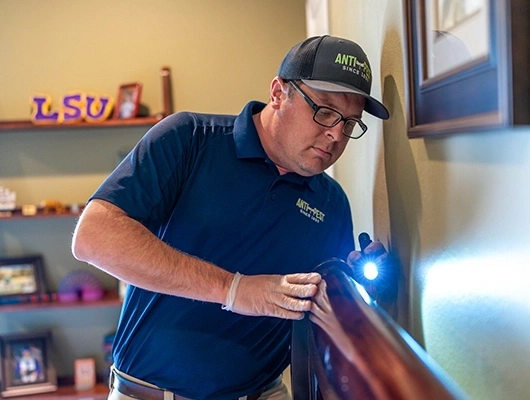

News, Blogs, & Articles
Anti-Pest Blog
